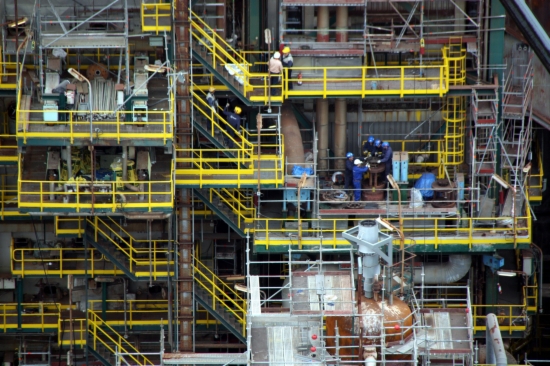Catalonia leaves recession behind and posts 0.1% quarterly growth in September
According to the Catalan Institute of Statistics (Idescat), Catalonia’s economy grew by 0.1% between July and September. For the first time in 9 quarters, the Catalan economy is growing again, leaving behind the technical recession. However, in annual terms, Catalonia’s GDP has not recovered yet and at the end of September it posted a 0.6% decrease on data from September 2012. Besides, the Spanish Institute of Statistics (INE) confirmed that the Spanish Economy also grew by 0.1% in the third quarter of the year, a figure which had been advanced last week by the Bank of Spain. In annual terms, the Spanish economy dropped by 1.2% compared to data from September 2012.

Barcelona (ACN).-According to data released on Wednesday by the Catalan Institute of Statistics (Idescat), Catalonia’s economy grew by 0.1% between July and September. For the first time in 9 quarters, the Catalan economy is growing again, leaving behind the technical recession. Idescat confirmed the news announced last week by the Catalan Finance Minister, Andreu Mas-Colell. However, in annual terms, Catalonia’s GDP has not recovered yet and at the end of September it posted a 0.6% decrease on data from September 2012. Idescat emphasised in its data analysis that the positive quarterly results registered between July and September confirm the improvement trend that was already registered in the first and second quarters of 2013, although back then results were still posting negative numbers. Idescat linked Catalonia’s recovery to the European economy’s general mild recovery registered in the last few months. Besides, the Spanish Institute of Statistics (INE) confirmed that the Spanish Economy also grew by 0.1% in the third quarter of the year, a figure which had been advanced last week by the Bank of Spain. However, in annual terms, the Spanish economy dropped by 1.2% compared to data from September 2012.
The results announced on Wednesday come from data analysed by Idescat and gathered by the institute itself and the Catalan Finance Ministry. The improvement in Catalonia’s economy in the third quarter of 2013 is mainly based on high external demand, which boosted Catalan exports, but also on the fact that the rate of fall of internal demand has slowed down. With the economic crisis, internal demand plummeted and, even though it is still at very low levels and continues to decrease, it is slowing down at a much lower pace. These trends have enabled the service sector to slow down the decrease of its Gross Added Value, which fell by 0.4% by the end of the third quarter in annual terms. Meanwhile, the Gross Added Value of the industrial sector increased by 1.2% in the same period and also compared to data from 12 months ago.
The service sector benefited from the moderation of the internal demand’s decrease but it benefited particularly from the excellent results of the tourism sector, which turned on an improvement of the market activities linked to this industry. The arrival of foreign tourists is essential to this dynamic: the number of international visitors increased by 6.6% and their spending grew by 11.9%.
The industrial sector also benefited from the slight situation improvement regarding the internal demand. However, the sector was mostly boosted by exports of goods, which have managed to reactivate Catalonia’s industry. In fact, last August, industrial production in Catalonia was posting a more positive evolution than the Eurozone average.
The construction sector continues to see its activity levels decrease, a trend that has been uninterrupted since 2008. However, now the Catalan construction sector is decreasing at a much lower rate than it was a year ago. In the third quarter of 2013, this subsector decreased by 5% in annual terms, far from the 10% and 15% reductions of previous quarters. The most positive aspect of this is that the rate of decrease in real estate sales is also starting to slow down. In the last 5 years, housing prices in Catalonia have dropped by 42%.